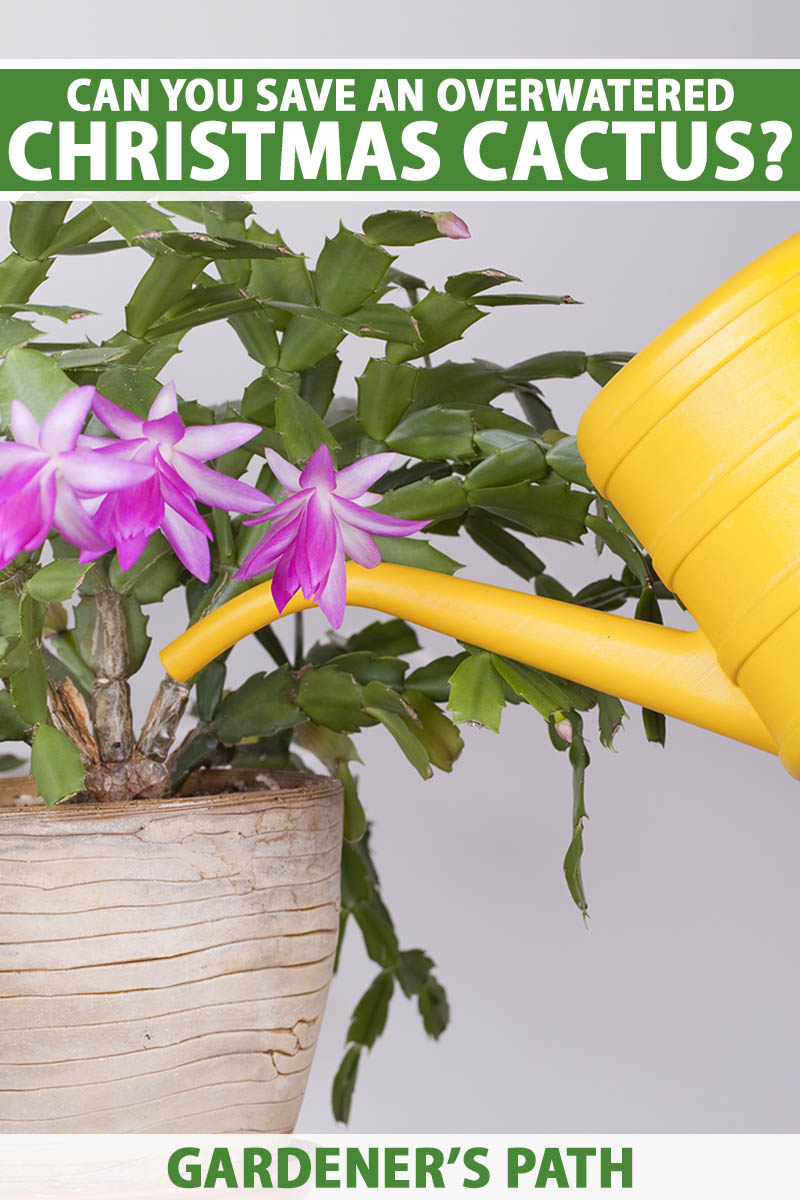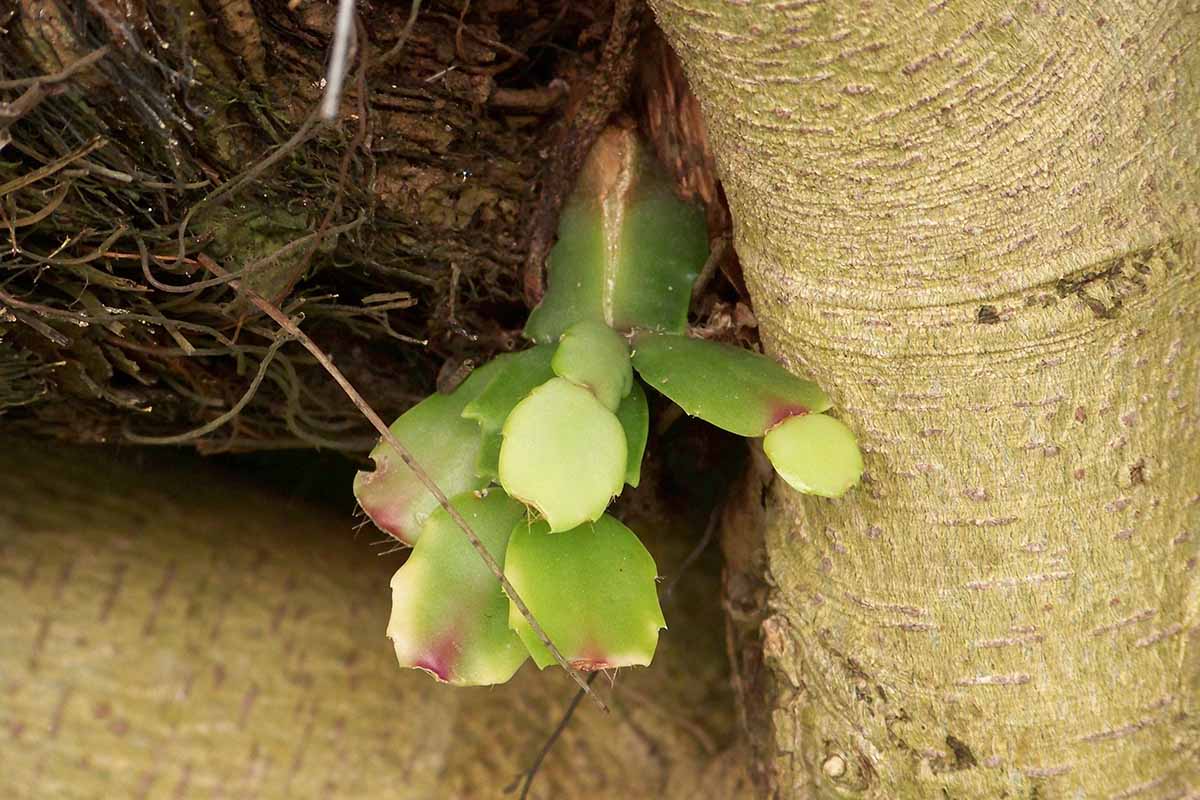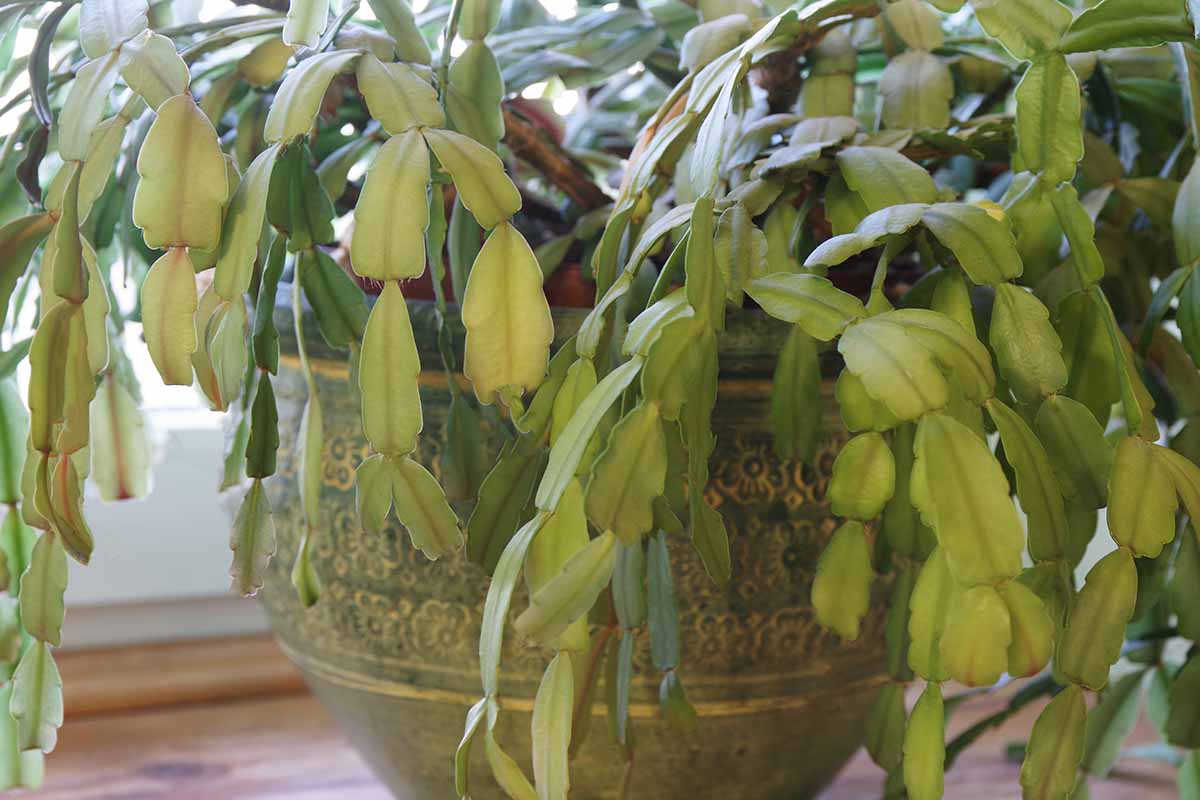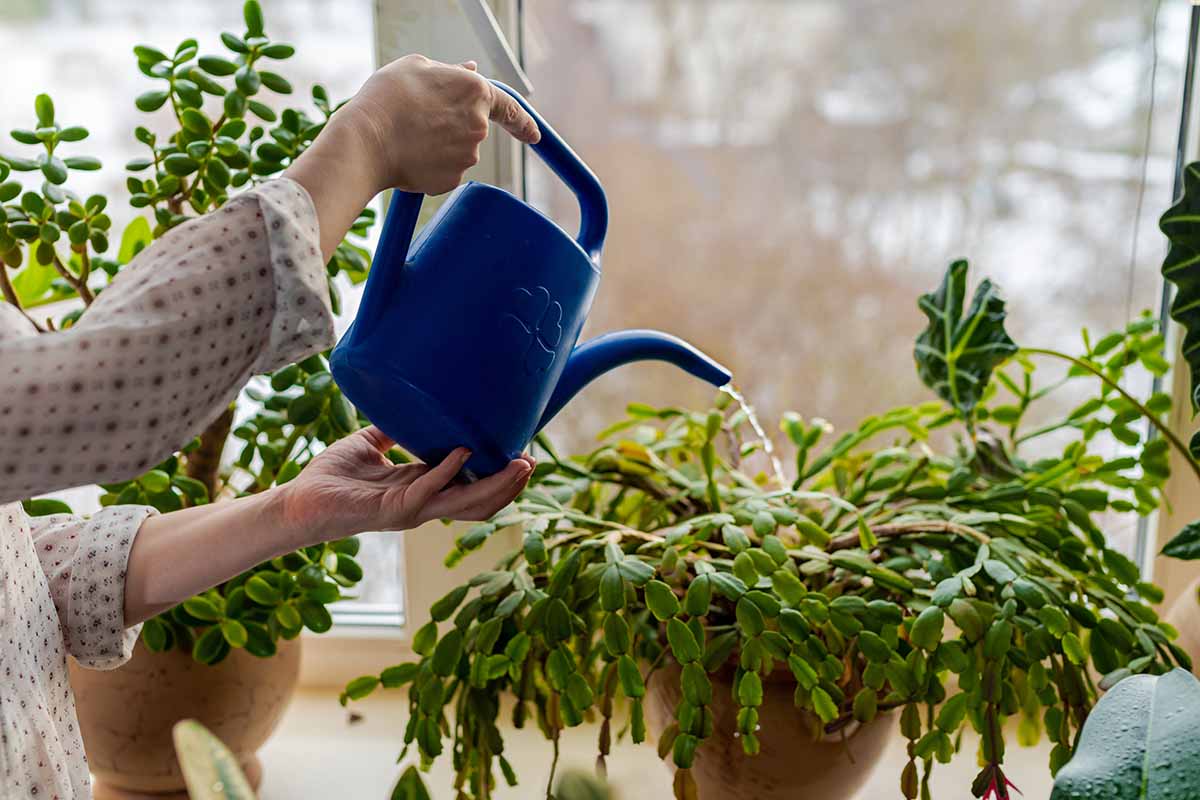It is an epiphyte that needs something to cling to for physical support, like a tree or rock. We link to vendors to help you find relevant products. If you buy from one of our links, we may earn a commission. Our guide to growing Christmas cactus discusses all you need to know to grow one. This article zeroes in on ways to avoid overwatering a Christmas cactus and how to go about saving one that is too wet. Here’s what we’ll cover: Let’s get started.
Waterwise Practices
As a rainforest native and not a desert dweller, Schlumbergera prefers consistently moist soil. However, needing ever-present moisture does not mean you must constantly hydrate a plant. Watering when the top third of the soil is dry, generally every two to three weeks, provides the required moisture. A deep soaking before the soil dries out mimics the conditions in these species’ natural habitat. When you water, continue pouring until it runs from the drainage holes in the bottom of the pot. Water a second time to moisten any remaining dry spots, and drain thoroughly before returning the pot to its drip-catching saucer. Reduce hydration during the six to eight weeks prior to Christmas at the end of December as part of a regimen to simulate dormancy and stimulate blooming. During this period, instead of giving it a good soaking every few weeks, lightly moisten the soil when the top inch is dry. Learn how to make a Christmas cactus bloom in our guide.
Proactive Measures
In addition to moisture management, there are 10 actions you can take to avoid oversaturation.
1. Empty the Drip Saucer
When a pot is hydrated, and sits in a saucer full of water, the wet soil wicks up even more moisture, depriving the roots of air and setting the stage for rotting. Keep the drip saucer empty to prevent this from happening.
2. Ensure Adequate Drainage and Airflow
Select a pot with one large or several small drainage holes to keep the soil from becoming soggy. Use a light soil or soilless potting medium that drains well and promotes airflow. Do not use garden soil because it compacts and drains poorly, potentially depriving roots of essential oxygen.
3. Instruct Plant-Sitters
Watering plants is not a one-size-fits-all job. While some may need weekly attention, watering every two to three weeks as mentioned is more the norm for Schlumbergera. Leave a note for anyone caring for your plants while you are away, or you may risk finding a squelchy pot upon your return.
4. Mark Your Calendar
If you make a note on a calendar each time you water, you’ll have a guide to the plant’s moisture needs throughout the year and you’re less likely to be overindulgent with hydration.
5. Monitor the Soil
Knowing when to water may be the number one houseplant challenge. When you’re on your way out the door, you may not want to stick your finger two to three inches into the soil, and you may not have a chopstick on hand. By using a moisture meter instead, you can avoid having to guess if a plant’s soil is dry one-third of the way down. Keep it nearby for easy use.
6. Notice Life Cycle Stages
When we understand a plant’s behavior, we are more likely to hydrate judiciously. Christmas cactus needs the most moisture when blooming and producing new foliage. Check it frequently during these times of active growth. And as mentioned, during the dormant period prior to blooming, there’s no need for a soaking. Instead, lightly moisten the soil when the top inch is dry.
7. Observe Color and Condition
It’s not uncommon to pay less attention to a plant when it is not blooming. However, periodic health checks can help avoid a rescue situation. When overly wet, the roots may begin to rot, unseen beneath the soil. As the deterioration progresses, symptoms such as bloating, dropping leaves, hanging limply, losing luster, and turning yellow may appear, indicating the need for rescue efforts ASAP.
8. Provide Adequate Light
While Schlumbergera is a forest plant, it needs sunlight to thrive. Bright indirect light is best indoors, but perhaps a plant was a gift, and you can’t provide these conditions. In a darker setting, the soil remains wet for longer periods. Consider using a grow light to replicate natural sunlight and reduce excess moisture if a bright location near a window is not available.
9. Select a Portable Pot
It’s okay to use a watering can, but if you can get your pot to the kitchen sink, all the better. When selecting a container, consider its weight and the ease with which you can carry it. It’s not a concern with a young plant in a small pot, but an older one in a large vessel can be heavy. By watering in the sink, you can be sure the excess water drains from a pot rather than pooling in a drip saucer.
10. Use a Porous Pot
And finally, to aid in evaporating excess moisture, it’s best to choose a porous pot. Clay and terra cotta are excellent choices. Glazed containers, metals, and plastics don’t breathe and may promote moisture buildup.
Rescue Protocol
With best practices, it’s unlikely that a plant will need saving from overwatering. But if you do find yourself with a mucky mess and note distress symptoms, it may not be too late. Here’s what to do: Take note of how deeply the plant sits in the pot. You’ll want to replicate this depth when you repot. Lay newspaper out and unpot the plant on it. Remove as much soil as you can by hand. Discard it, as it may harbor bacteria. Rinse the remaining soil off. Lay the bare root plant on clean, dry newspaper. Examine it for mushy, rotten places. Use garden scissors to remove any rotten plant material. When finished, sanitize them in a 10-percent bleach solution (1 part bleach to 9 parts water). Sanitize the pot in the same way. Rinse well and dry it. Leave the remaining plant portion on the newspaper for 24 hours. Once dry, repot it in fresh potting medium. Set it at the same depth it was in the original container. Allow the pot to remain dry for 24 hours. Then water until it runs from the drainage holes. During the rescue process, you may want to take cuttings of some of the healthier portions to try to root in case the revival attempt fails. In our Christmas cactus growing guide, you’ll find instructions for propagating cuttings. When attempting to revive a soaking wet plant, avoid gimmicky ideas for drying the soil out, like using a hairdryer or putting the pot out in the sun or wind. They waste time focusing on the soil surface while the roots continue to suffocate. Would you believe, if I had water left in my glass in my younger days, I’d pour it into the nearest houseplant automatically? Or that I used funky containers, like old tea kettles, that had no drainage holes? We’ve all had to rescue plants. Christmas cactus is a sturdy one that can withstand a fair amount of moisture stress. It also responds well to rejuvenation efforts. And when the root damage is too extensive, you may still be able to make new plants from cuttings. Have you had watering issues with Christmas cactus? Tell us about them in the comments section below. If you grow Christmas cactus or would like to, we recommend reading the following articles next:
Why Do I See Hair-Like Roots on My Christmas Cactus?Why Is My Christmas Cactus Turning Purple?What To Do About Woody Stems on Your Christmas Cactus



